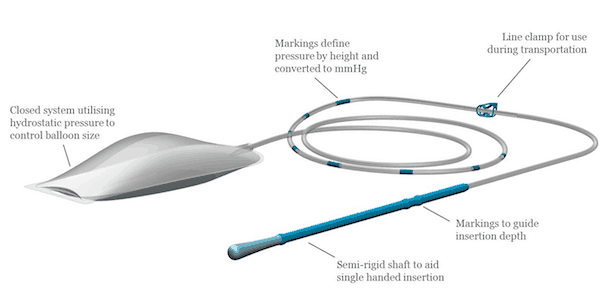Now a low-cost device designed to prevent deaths from the condition, known as postpartum haemorrhage, has been developed in the UK.
The device, called a Uterine Balloon Tamponade (UBT), was developed by engineers at product consultancy Cambridge Design Partnership. It is designed to be simple to use, even by staff without specialist training.

Postpartum Haemorrhage is believed to be responsible for 57,000 deaths each year worldwide, the overwhelming majority of which are in developing countries. In 2012, the World Health Organisation recommended that UBT, in which a balloon is inflated inside the uterus to stem the bleeding, could be used to treat the condition when drugs prove ineffective or are unavailable.
However, commercial UBTs can cost a few hundred dollars each, and must be carefully inserted using specialist equipment in an operating theatre by trained obstetricians, putting them out of reach of many hospitals in developing countries.
Instead, doctors in the developing world have been trialing the use of so-called “condom catheters”, in which a condom is tied to a urinary catheter at a cost of around $5. But even this cheaper alternative requires some specialist equipment and significant training to assemble and use successfully, according to Lucy Sheldon, human centred design specialist at CDP.
In contrast, the CDP device is designed to be easily inserted by staff with minimal training, with markings to ensure it is placed at the right depth without the risk of damage to the uterus. To inflate the balloon to the required level, the user then simply lifts a liquid-filled bag to different heights, which are again indicated by markings, said Sheldon. “Gravity works to inflate the balloon,” she said.





Glasgow trial explores AR cues for autonomous road safety
They've ploughed into a few vulnerable road users in the past. Making that less likely will make it spectacularly easy to stop the traffic for...